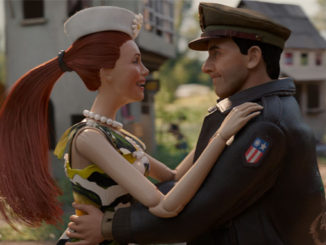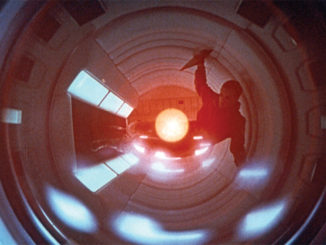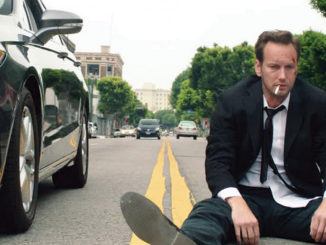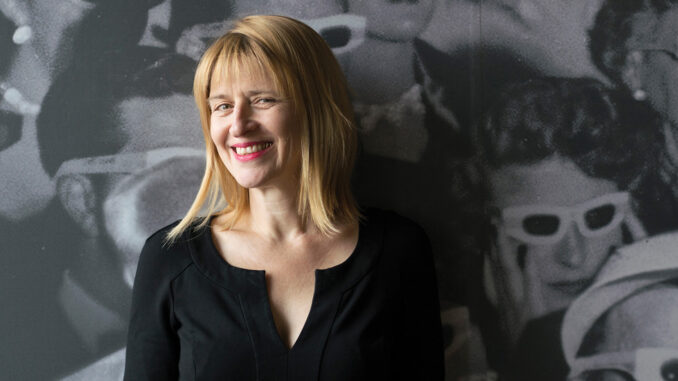
by Rob Feld • portraits by Sarah Shatz
Veteran New York indie film editor Sabine Hoffman, ACE, discovered film editing and began her career as a student in Berlin. To make her rent, she worked at a music club before finding jobs on film sets: driver, script supervisor and finally assistant director, which is more of a creative collaborator position in Germany than it is in America. When she was invited into an editing room, Hoffman suddenly saw her different interests in art history, music, photography and theatre converging. “I realized that film editing is all about language, rhythm and music, and I could bring all my interests together,” she recalls. “It was a magical discovery.”
She worked as an apprentice editor in Germany, but started editing student films herself when she moved to Boston to intern with Robert Wilson at the American Repertory Theater. From there, she took on indie films but found her most frequent collaborator when producer and InDigEnt founder Gary Winick introduced her to Rebecca Miller, who was looking for someone to cut Personal Velocity: Three Portraits (2002). Hoffman took the job and the film went on to win the Grand Jury Prize at Sundance.
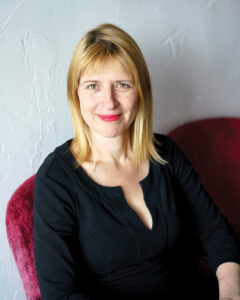
Hoffman recently completed her fourth film with Miller, Maggie’s Plan, which premiered at the Toronto International Film Festival, and opened May 20 through Sony Pictures Classics. The film follows Maggie (Greta Gerwig), a New York woman intent on having a baby utilizing sperm donated by a college acquaintance. Just — and the word just cannot be overemphasized — as she attempts the self-insemination, she falls in love with John (Ethan Hawke), a brilliant but self-indulgent anthropology professor apparently in a stifling marriage with intimidating Danish uber-academic Georgette (Julianne Moore).
There was plenty of behavior and performance to track in the dialogue-heavy story, with the first cut coming in at 140 minutes before being trimmed down to 92 minutes. Any one of the actors could be the story’s center of gravity, and Hoffman credits the collaborative atmosphere that she and Miller maintain to finding the balance they felt served all masters.
“My motto for Maggie’s Plan in particular was, ‘I want you to have your cake and eat it too,’” says Hoffman. “That’s what it should be.” CineMontage interviewed Hoffman in Manhattan in March about the new film as well as her career and her frequent collaborations with Miller.
CineMontage: Did you go through a traditional apprentice process in Germany and do you remember a “light bulb moment’ that came from the experience?
Sabine Hoffman: Yes, an amazing German editor/director, René Perraudin, mentored me, and I remember his generosity. I was overly eager and one day made a big mistake because of it. Some people were very upset and I had to undo everything I had done. I felt very ashamed and sad. I wanted to quit forever, and it was he who said, “Don’t worry, I understand why you did it. This is a learning moment — just don’t forget about it.”
Communication is everything. Ask about things when you are curious and try to build bridges of communication. As an editor, I would like my cutting room to be a magical kitchen where it is safe to experiment. Be open to ideas and invite them, because it’s not necessarily me who is going to have the best one.
CM: Do you feel something has been lost going from those days of 40 tracks on a mag to working in digital?
SH: I’m not sure if we’ve lost so much because we’ve gained so much — like the ability to explore versions and layer things in ways that were not as instantly possible before and, thanks to digital, I will always do a first draft that has everything in a scene as written. But if I discover something new, or something doesn’t work, it is easy to create alternatives.

In terms of training however, yes, traditional ways of learning from somebody and how they mentor you have shifted. It still can happen; you can get an opportunity to work with somebody as an assistant and if you’re good and talented, they will make sure that you can learn with them. I think part of being a member of ACE is that mission — you want to give back to a new generation of filmmakers. I also teach at times, which has been incredibly rewarding. For future editors, I would advise working on student films if you want to improve your craft, find assignments, help somebody. It’s only through practice that you can improve.
CM: Were you aware of a breakout moment for yourself, career-wise?
SH: I would say my first break was Jeff Lipsky’s film, Childhood’s End [1996], and then Alex Sichel’s All Over Me [1997], my first film at Sundance. Also, Morgan J. Freeman’s films Hurricane Streets [1997] and Desert Blue [1998]
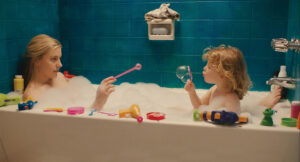
CM: With all these Sundance films, did you find it easier to get work?
SH: I wish it was so easy. It wasn’t and it still isn’t. There are a lot of great people out there. Two years ago, I got a call for a wonderful project that was another extension, as it was my first musical. The Last Five Years [2014], based on Jason Robert Brown’s Broadway musical, was directed by Richard LaGravenese. He is an amazing director and a great inspiration to me. Our initial meeting came thanks to Dolly Hall’s recommendation to Richard, who had produced All Over Me. You would never think 15 years later that would come around but it did.
CM: Your collaboration with Rebecca Miller has spanned four films now. How has your working process evolved over time?
SH: When Gary Winick introduced me to Rebecca for Personal Velocity, it was still in the script stage, which is how all of our collaborations started. Personal Velocity was based on a collection of short stories she had written. That was a wonderful experience because Rebecca was quite inventive within the financial limitations. It was also the first film that was shot digitally on consumer DV cameras; Ellen Kuras won the cinematography prize at Sundance. Rebecca designed some scenes in stills because we didn’t have time and money to shoot everything normally. Later in editing, we had to decide how the scenes function and what is important about them. And that’s what we always look for — finding the essence of the moment and the character to build from; how can we tell this effectively? That’s a wonderful process to engage with.
CM: How did your process evolve after that?
SH: I usually read the script in an early draft. We talk a lot about it, not so much for me to give notes but to understand the characters and story. I feel it’s important to get involved as early as possible in the world of the story, to understand it and the motivations and intentions of the director. I want to be in her head before we start shooting, because during the shoot, there’s little time to have intense conversations.
For Maggie’s Plan, Rebecca invited me to be part of a week of breakdown meetings with Sam Levy, the cinematographer. At that point, we already had a lot of locations, and Sam had taken videos. They also had already worked over several months on the visual language and had developed many references. There was a whole world emerging already in the imagination of things and it was wonderful to come in and be able to think about how we were going to get from here to there, and what may still be missing.
During the shoot, sometimes you need an extra transition or something is missing. To be able to respond to that, prep is everything — both creatively and technically. During the shoot, I usually send drafts of scenes to Rebecca so she can evaluate them, get a sense of how moments might feel connected and give notes.

CM: What was the great challenge of Maggie’s Plan?
SH: There was some time pressure. The shoot was 24 days and I showed Rebecca a first assembly a week after. Then we cut for 11 weeks and locked picture. The script was long and the first assembly was 2:20. It was all wonderful, funny dialogue, but the film is now at 92 minutes, so we cut out 40 minutes of dialogue, which just emerged from our process. It just felt more and more right. We worked on balancing the characters and different storylines.
I’m grateful for the trust that comes from this being our fourth collaboration, but there’s no space to get lazy. You always have to give your best. When you have the opportunity to create a safe environment to experiment without being ashamed to have an idea, you can bring out things. The wonderful thing about Rebecca is that she is incredibly fearless in the cutting room. She’s not precious about her scenes. She wants it to be truthful, so most of our time is spent looking at scenes and saying, “This is nice but how can it be better?”
CM: Is this basically a model of working that you try to replicate?
SH: Yes, of course. I do like to come in early, understand as much as possible and work parallel to the shoot to understand what’s being shot; to know when you need something that isn’t there. In my collaboration with Richard on The Last Five Years, we started working before the shoot. The time structure is complex, as one character’s storyline moves forward, while the other one’s moves backwards. We had footage from rehearsals so we looked at that to understand the intentions of the characters and the tonality ahead of time. When you have a good first assembly that isn’t too far from the script, and at least captures most of the ideas, that’s very helpful. Then you have to throw it all out.
One of the biggest things to remember is to keep a beginner’s mind. You know everything about why you had to cut it this way, but then you have to throw it out and look at the film as if you’ve never seen it before. You must force yourself to be innocent again and not be precious or take things personally. Being righteous about anything doesn’t help at all. That’s one of the many qualities I admire about Rebecca: She’s completely open about making it the best it wants to be while still fighting for the things that are important to her. She’ll never say, “I love that line, let’s keep it.” She’ll say, “I wrote it but it’s already in the novel and we may not need to say it here,” or “These looks tell us more than the line did.”
“The best edit is the one that your brain does. It’s not only about having fantastic shots.” – Sabine Hoffman
CM: Relatively speaking, there are not many female directors working, but you have collaborated with many. Do you find a difference in the experience?
SH: It’s hard to say because I’ve had wonderful collaborations with both male and female directors, but I do feel women directors kick ass and need to kick ass more because the industry is not female-friendly, if you look at the statistics. We are shamefully underrepresented.
CM: What makes a great edit?
SH: Filmic storytelling is the synergy of sound and picture. The magic of editing is juxtaposing images and information; it’s all about teasing the brain. The best edit is the one that your brain does. It’s not only about having fantastic shots. It’s in the accumulation of information about a character, contrasted with something else. Our brain is so quick, it always wants to know what’s next. So how do we guide our audience and our own brains in the process? What information do we want to reveal at what point? It keeps changing in the shaping. It’s not the plot that does it, it’s the emotional journey that we take as an audience. Sometimes you think it’s a plot problem, but it’s really an engagement problem.
If you can engage an audience by creating a personal moment for a character early on, it can go a long way. But you have to find it. We took some beautiful moments out of Maggie’s Plan because they were in the way of feeling something more important. Find what makes you respond — which might also be a sound. But often it’s how you see it and not what you see.



